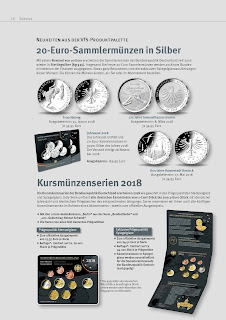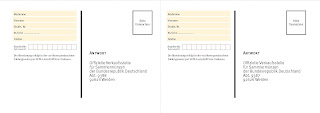The coin features symbols of Friesland – the jewels of Mata Hari, waterways, Frisian sailboats and horses, water lily leaves from the provincial flag and the horn of culture and festivities.
Images courtesy of Coin & Currency Institute.
Images courtesy of Coin & Currency Institute.
The Proof 900 fine gold €10 coin has a mintage limit of 1,000 pieces and costs $575.
Images courtesy of Coin & Currency Institute.
Images courtesy of Coin & Currency Institute.
The €5 coin can be purchased in sterling silver or silver-plated copper.
Images courtesy of Coin & Currency Institute.
Located about 87 miles north of Amsterdam, Leeuwarden is the capital of the province of Friesland. The city is being distinguished this year as a European Capital of Culture for 2018, in a 30+ year effort by the European Union designed to “highlight the richness and diversity of cultures in Europe” and “foster the contribution of culture to the development of cities,” according to the European Commission's “Creative Europe” website.
Leeuwarden and the Friesland area as a whole are embracing this honor with a bevy of events and programs throughout the year.
“In 2018, we’re going to show how we Frisians celebrate life,” the province’s website explains. “How we dare to stick our heads above the parapet to show the world how we go our own unique way. Our landscape is the stage and everyone is invited.”
Leeuwarden has been inhabited since the 10th century and became a city in 1435. In the center of the city is the remarkable tilted Oldehove tower, a structure that began to lean during construction in 1529. Large protective dikes, waterways, old windmills, beaches and marshes rich with bird life can be found throughout Friesland, as much of the region is below sea level. Leeuwarden’s Museum Harbor on the north side of the Willemskade houses many old ships also known as “floating monuments.” All are at least 50 years old, and some are more than 100 years old, but they are all well-kept.
One of the area’s most notable resident was Mata Hari, an exotic dancer convicted of being a German spy during World War I and killed by firing squad in France.
Friesland is also known for the Elfstedentocht — an 11-city, 124-mile ice-skating race held only when the weather is cold enough to freeze the canals to a 6-inch thickness. Unfortunately, this hasn’t happened in 21 years.
The coin celebrating the cultural capital features symbols of Friesland — the jewels of Mata Hari, waterways, Frisian sailboats and horses, water lily leaves from the provincial flag and the horn of culture and festivities.
The Royal Dutch Mint describes the obverse, with King Willem-Alexander’s head at the center, as having “a sense of centuries-old Frisian craftsmanship” with “techniques of woodcarving and mint craft come to life” through the use of modern digital and 3-D printing techniques. The result is the fusion of a weathered seal and a contemporary object.
The design is offered on three different coins:
A Proof .900 fine gold €10 coin weighs 6.72 grams, measures 22.51 millimeters in diameter, has a mintage limit of 1,000 pieces and costs $575.
A Proof .925 fine silver €5 coin weighs 15.5 grams, measures 33 millimeters in diameter, has a mintage limit of 5,000 pieces and costs $69.75.
An Uncirculated silver-plated copper €5 coin weighs 10.5 grams, measures 29 millimeters in diameter and costs $22.95.
The distributor Coin & Currency Institute offers the coins to collectors in the United States. Shipping costs $5.75 per order. For more information on the coins or to order, visit the distributor’s website.
Sursa informaţiilor CoinWorld.

















































